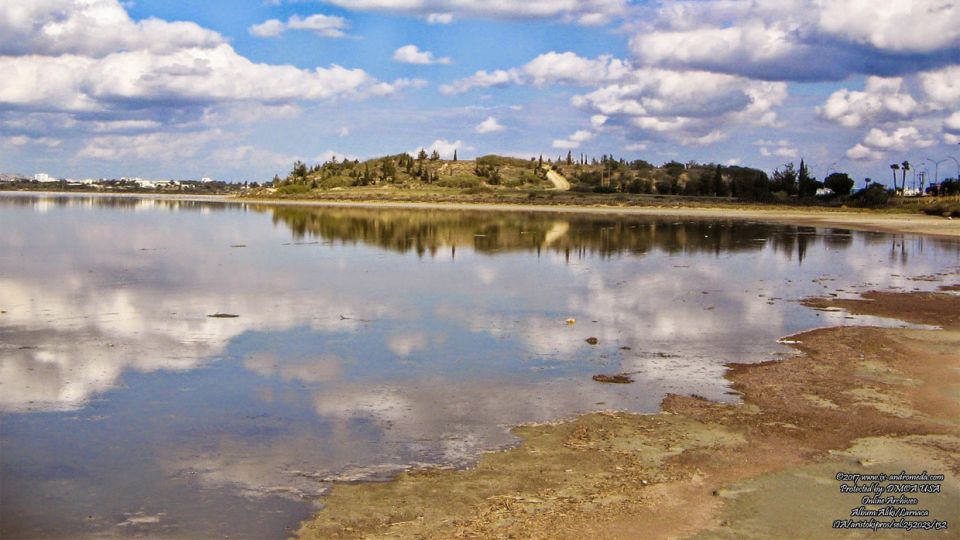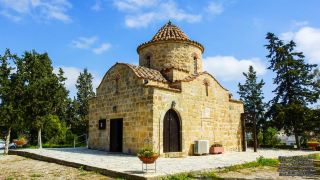The salt lake of Larnaca is a complex of 4 lakes amongst which three are connected. They are salt lakes, since seawater passes through a porous rock causing them to be salty.
Of course there is another version being told by the People. Back when Agios Lazaros lived in Larnaca, he asked a woman to give him some water to drink. She denied to do so, and therefore the Saint cursed her saying “May your vineyards dry up and become like Sodom and Gomorrah from salt”. And so it happened and they were transformed to salt lakes. In Cyprus, there are two salt lakes that are important biotopes. One of them is the Aliki (salt lake) of Larnaca and the other one is the one of Akrotiri, in Limassol.
In Larnaca, the salt lake dries up during the summer and a thick layer of natural salt remains on its surface. In the last century and up until 1980 the salt was gathered and sold to industries. This activity was the job of dozens of young people from the surrounding villages and mainly from the one close by which is called Aradippou. When the salt lake dried up, the workers created groups and the leader of each group was responsible for the gathering of the salt in a precise area of the salt lake. He was the one to divide the area into smaller parts, separating them by opening up paths with salt. After that, every young worker, started to gather the salt into piles with the help of a shovel ; it was important that each one of them had their own donkey. Later on, they filled their baskets with salt and they loaded them on the donkey that transferred it to the shore. There, the person responsible, weighed the salt and piled it on to an even greater pile.
When the pile grew significantly, it was covered with sand and the salt remained there until the traders arrived to get it. It was very hard labour, for the workers as well as for the animals. This process stopped because the water was polluted by the allotment of the area on the northwest side of the lake, where the greatest volume of water of the lake comes from.
When salt collection was stopped, nature “endowed” the lake with the appropriate food for a number of migratory birds that use the area in their travels from Europe to Africa and back.
Its area is 1761 hectares, 760 of which are covered with vegetation. Before 1974 this area was a lot greater, since that is when the two airports were built.
It belongs to the “nature 2000” program and it is on the 1081st position on the list of the European wetlands. A path takes you to a big area of land on the perimeter of the lake that begins on the east shore and ends after the Muslim Mosque.
All the seasons are appropriate if you wish to visit the lake, since each one of them has a different side to show you. The period when the lake is filled with water (from October onwards) is a period when you can observe the process that takes place in a slow but visible way. The bank of the lake fills from the northwest side and it continues stably towards other directions.
On the west shore of the salt lake, the most holy Mosque of the Muslims of Cyprus, and not only, is built. It is the “Hala Sultan Tekke” Mosque, and rumours go around that it is where the tomb of Umm Haram is found. The Mosque is in excellent condition thanks to the Cypriot Government. Thousands of pilgrims visit it, as well as simple visitors. There is no entrance fee.
The salt lake is found on the western side of Larnaca, after the well known “Mackenzie” beach, next to the old and and new international airports of Larnaca.




